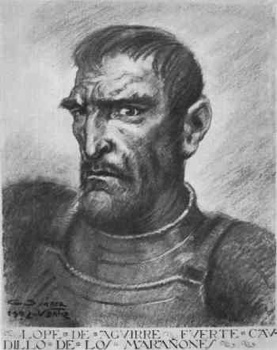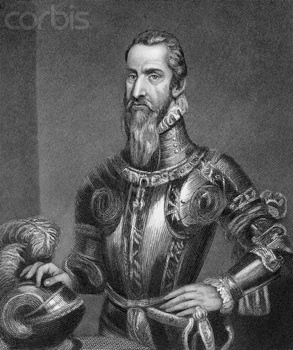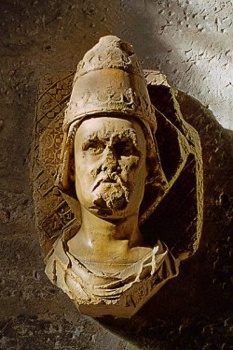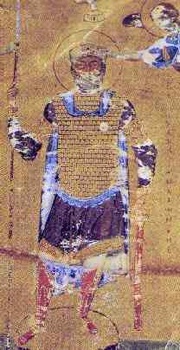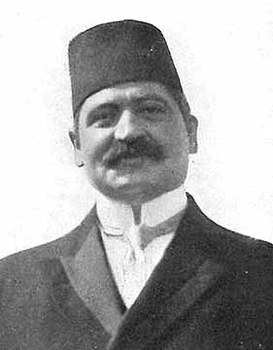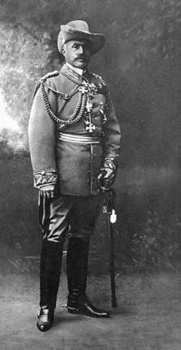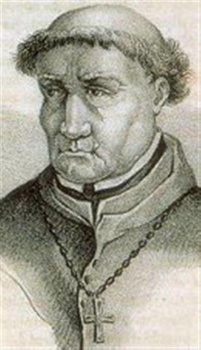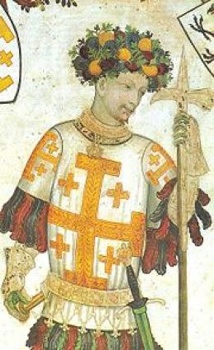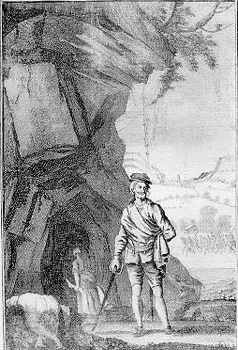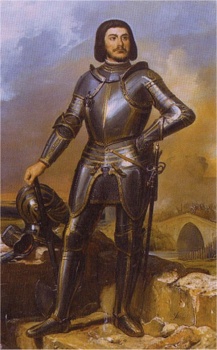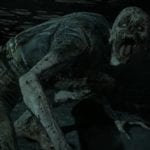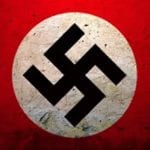 Mysteries
Mysteries  Mysteries
Mysteries  History
History 10 Surprising Stories About the Texas Rangers
 Humans
Humans 10 Philosophers Who Were Driven Mad by Their Own Theories
 Miscellaneous
Miscellaneous 10 Video-Game-Worthy Weapons and Armors from History
 Weird Stuff
Weird Stuff 10 Psychics Who Accurately Predicted Wartime Events
 The Arts
The Arts 10 Pieces of Art Inspired by a Broken Heart
 Health
Health 10 Science Fiction-Sounding New Medical Treatments
 History
History 10 Surprising Facts About the Father of Submarine Warfare
 Space
Space Ten Astonishing New Insights into Alien Worlds
 Weird Stuff
Weird Stuff 10 Bizarre Summer Solstice Rituals Still Practiced Today
 Mysteries
Mysteries Top 10 Haunting Facts About the Ghost Ship MV Alta
 History
History 10 Surprising Stories About the Texas Rangers
 Humans
Humans 10 Philosophers Who Were Driven Mad by Their Own Theories
Who's Behind Listverse?

Jamie Frater
Head Editor
Jamie founded Listverse due to an insatiable desire to share fascinating, obscure, and bizarre facts. He has been a guest speaker on numerous national radio and television stations and is a five time published author.
More About Us Miscellaneous
Miscellaneous 10 Video-Game-Worthy Weapons and Armors from History
 Weird Stuff
Weird Stuff 10 Psychics Who Accurately Predicted Wartime Events
 The Arts
The Arts 10 Pieces of Art Inspired by a Broken Heart
 Health
Health 10 Science Fiction-Sounding New Medical Treatments
 History
History 10 Surprising Facts About the Father of Submarine Warfare
 Space
Space Ten Astonishing New Insights into Alien Worlds
 Weird Stuff
Weird Stuff 10 Bizarre Summer Solstice Rituals Still Practiced Today
Top 10 Lesser-Known Savages In History
There are always two sides to history. Unfortunately, history has generally been written by the victor. As a result, only one viewpoint is told and exaggerations are made, but occasionally the other angle gets out there. It is then up to the student to determine what is authentic and what is mere fabrication. History shows that the following people were 10 of the most barbaric men who ever lived. Whether the general consensus on them is true or not, that’s for you to decide. Nonetheless, the facts that are known reveal 10 men who are corrupt in nature and will do anything or kill anyone to get what they want and often for sheer enjoyment. They personify the word “bloodthirsty.” At times, sharing traits with the most savage of beasts, these men prove that humans aren’t so different from animals.
Aguirre stands out as one of the most ruthless of the Spanish conquistadors. He arrived in Peru in 1544 and in 1560 joined an expedition of several hundred men led by Pedro de Ursua in search of El Dorado. Aguirre eventually turned against Ursua’s leadership and would have Ursua executed. The man who took over, Fernando de Guzman, would also soon be put to death. Aguirre declared “I am the Wrath of God” and took over the mission. Those who remained on the mission who were against him were executed. As he sailed down the Amazon, Aguirre slaughtered those who he met along the way. In 1561 he showed himself in open rebellion against the Spanish crown by seizing Isla Margarita, off the coast of present day Venezuela, from Spanish settlers. He was surrounded and captured at Barquisimeto. With his execution approaching, Aguirre reportedly murdered his own daughter to ensure that no one but him could love her.
One of the foremost professional soldiers of his day, Alba was the commander in chief of Charles V army. Despite diminishing trust in Alba, Charles’ heir, Phillip II sent Alba as an emissary to France to hold negotiations with Catherine de Medici. With an anti-Protestant policy, it is believed that Alba helped lay the groundwork for the massacre of French Protestants on St. Bartholomew’s Day, 1572. In 1567, Alba was dispatched as governor of the Spanish Netherlands following the outbreak of popular unrest. Determined to restore order swiftly and in a fierce fashion, Alba, with 12,000 soldiers, set up a Council of Troubles soon to be dubbed the Council of Blood. This council declared thousands of people guilty of rebelling and either exiled, imprisoned or executed them. Every class of society was hit, noble birth was often not enough to protect some. After entering Brussels, 22 of the town’s leading citizens were beheaded. Dozens more massacres were to follow. Alba’s brutal reaction to the rebellion only fueled more insurrections against the Spanish crown.
Robert of Geneva was brilliant intellectually and was born to a family very close to the church. In 1368, aged just 26, Robert became an archbishop. Pope Gregory IX recognized his talents and promoted him to cardinal in 1371. Serving under the Pope in Italy from 1376 to 1378, Robert was in charge of suppressing the Papal States from revolting against the authority of Rome. Robert hired Sylvester Budes, leader of a band of Breton mercenaries and Sir John Hawkwood, an infamous English soldier of fortune. In 1377, Hawkwood and the Bretons, financed by the papacy, captured the city of Cesena. Hawkwood was willing to pardon the revolting townspeople in return for surrender, but Robert overruled him, ordering they be put to the sword. The mercenaries wreaked havoc on the streets. Those who hid in the Church of St. Stephen were killed and the church itself was vandalized. The convent was broken into and the nuns were raped. Over 4,000 people were slaughtered. In 1378, Bartolomeo Prignano was elected as Pope Urban VI. Unhappy with the choice, the cardinals reconsidered and eventually nullified Urban’s election and opted to elect Robert as Pope Clement VII. Supported by King Charles V of France, Clement established Avignon as his residence. France, Scotland and various German states recognized Clement as the Pope while Urban governed from Rome, supported by Spain and the Italian states. And so the Great Schism began. Because it is not possible for the cardinals to nullify a papal election, Clement VII was eventually recognized by all as an antipope.
Basil II was a powerful and effective Byzantine ruler. Best described as a “hero-monster”, he was successful on all fronts and was perennially engaged in warfare. Basil ruled for 50 years and brought the Byzantine Empire to new heights, expanding it’s borders to it’s greatest extent. He Swiftly destroyed all who challenged his rule. This included rebelling landowners, his uncle and Arab invaders. Eventually he would cross paths with his enemy Tsar Samuel of Bulgaria whose own empire was swallowing up Byzantine territory. Struggling with his campaign in the beginning, Basil began to have steady success against the Bulgars. Basil would finally win a massive victory at the Battle of Kleidon on July 29, 1014 as his forces took the capital. As punishment, Basil lined up the captive Bulgar soldiers and had them blinded. He left one eye untouched for every hundred men so that the troops could find their way home. Reportedly 15,000 Bulgars, terrorized, wounded and blinded pathetically shuffled away. Tsar Samuel fainted after seeing his soldiers return and died of a stroke. Thus Basil II earned his epithet ‘Bulgar Slayer’ through this monstrous act.
Pasha was the key architect of the Armenian genocide, one of the largest genocides in modern history. Over 1 million people were massacred in the span of 2 years. A member of the Young Turks, Talat rose up and became one of the three Pashas who ruled the Ottoman government in 1913 until the end of the disastrous First World War. Many Muslim Turks came to see the rise in nationalism of the Christian Armenians as a threat to the existence of the Ottoman state. Programs had already been installed against Armenians in previous years with possibly hundreds of thousands dying. 30,000 died in the Adana massacre of 1909. Once entering World War One, the Ottoman’s endeavor ended in total failure. Russian and Armenian forces set up an Armenian mini-state in 1915 and thus Talat Pasha sought to punish them. Security forces rounded up 250 Armenian intellectuals and leaders in Istanbul in 1915, and eventually executed them. After passing a Deportation Law, Pasha ordered deportations and executions to be carried out against the whole Armenian population. During the deportations, conditions were deplorable and men were routinely separated from the rest and executed. Many prisoners were tortured and were victims of gruesome medical experiments. More died of hunger and thirst. In some instances victims would be crucified in imitation of Jesus as the perpetrators would say: “Now let your Christ come help you!” Others would have red-hot irons and pincers applied to their flesh. Out of a population of 2.5 million Armenians, between 1 and 1.5 million perished in this period. After the Ottoman collapse, Talat Pasha fled to Berlin and was subsequently murdered there in 1921. His assassin was an Armenian genocide survivor.
Issuing one of the first historically documented orders for genocide, von Trotha who was the commander in chief of German South-West Africa had to put down a major rebellion, led by the Herero tribe. With an army of 10,000, von Trotha surrounded the Herero in a single location on three sides. The only escape for the Herero was to enter the Kalahari Desert. The Herero numbered about 50,000 with 6,000 warriors. They could not compete with the German forces who had modern rifles, machine guns and artillery. As the surviving Hereros escaped into the desert as planned, von Trotha ordered all the watering holes to be poisoned. Fences were erected along the desert boundary with guard posts to watch for any who tried to escape. Anyone caught would be shot on sight. Eventually von Trotha would issue an Extermination Order. Those who were not shot on sight would be put into labor camps and pushed into slavery. Thousands of Herero died from overwork, disease or starvation. Many of the women were sexually abused. Only 15,000 out of the initial 80,000 Herero population remained alive. Due to the supposed inferiority, some Herero were the subject of medical experiments. Later, there was a Nama uprising and some 10,000 died. Another 9,000 were put into concentration camps. On von Trotha’s watch, the Herero and Nama tribes had all been eradicated.
A man of Jewish descent, Torquemada was the first inquisitor general in Spain. Torquemada convinced the government, led by Ferdinand and Isabella, that the presence of Jews, Muslims and recent false converts to Christianity in Spain represented a dangerous corruption of the true Catholic faith. Because of Torquemada, repressive laws were passed to force the expulsion of Spain’s non-Christian minorities. He received support from Pope Sixtus IV. Torquemada, now matching the authority of Ferdinand and Isabella themselves, oversaw the proclamation of the 28 articles listing the sins that the Inquisition aimed to purge. Identifying and exposing “Marranos” (Jews who had pretended to be Christian but continued to practice Judaism) was a main focus. Inquisitors were granted power to do whatever necessary to reveal the truth. This inevitably led to violent persecution. In February 1484 alone, 30 people in the city of Ciudad Real were found guilty of crimes and burnt alive. Between 1485 and 1501, 250 people were burnt in Toledo. In 1492, in Torquemada’s home town of Valladolid, 32 people were burnt. Declaring that Jews were a mortal threat, in 1492 Ferdinand and Isabella decreed that all Jews who had not converted to Christianity were to be expelled from Spain. About 40,000 left the country, many of them given sanctuary by the tolerant Islamic Ottomans in Istanbul and several other cities. Torquemada remained as inquisitor general believing that his work was not done. He became wealthy as well due to all that he had confiscated. He would eventually die in office after two decades of burning approximately two thousand people.
Godfrey, the duke of Lower Lorraine, led the first crusade and was a brutal religious fundamentalist. In 1095 pope Urban II called for crusaders to assist Byzantine emperor Alexius I against Turkish forces attacking Christian Byzantium and to liberate Jerusalem from the Muslims. In 1096, Godfrey gathered an army of about 40,000 and declared that he was determined to avenge the blood of Jesus on the Jewish people. Godfrey’s reputation grew as the years went on. In 1098, Godfrey reportedly killed 150 Turks with only 12 knights. Later that year, he cut a Turk in half with a single, downward swipe of his sword. Finally in 1099, Godfrey took aim at Jerusalem. On Friday July 15th, Godfrey was one of the first crusaders to breach the city’s defenses via siege tower. After opening the gates, the crusaders charged into the city. With Muslim citizens fleeing to the al-Aqsa Mosque, Iftikhar ad-Dawla, the Fatimid governor of Jerusalem, made his last stand. On condition of surrender, Iftikhar and some of his solders were allowed to escape. For the next two days, the crusaders pillaged Muslim holy sites and slaughtered everyone left in the city regardless of whether they were combatants or civilians, Muslim or Jew. Victims were either burned to death or had their stomachs cut open with the belief that Muslims swallowed their gold. The Jews fled to a synagogue which the crusaders would burn down. Reportedly piles of heads, hands and feet were scattered throughout the city. Godfrey walked barefoot through the blood, his feet colored to his ankles in the blood of men, women and children. His fellow crusaders chose him to become the first Christian ruler of Jerusalem. He would die of plague a year later, his mission complete.
Beane was the head of an incestuous clan who lived off robbery, murder and cannibalism. Some historians suggest that he never existed and say that his story was propaganda created by the English demonizing the Scottish. The story goes that Alexander Beane left home, never showing an interest in work, with an equally unpleasant local woman. Once they arrived at Bennane Head, they set up home in a coastal cave hidden away from the view of passers-by. Over the next 25 years, Beane and the woman raised a family of about 8 sons and 6 daughters who bred together to produce 18 grandsons and 14 granddaughters. The family was raised without any notions of humanity. They preyed on travelers who traversed near their stretch of coast and would rob and kill their victims. The clan would then drag the victims body back to their cave where they dismembered the body and devour it. Leftovers were pickled and unwanted parts were disposed into the sea. Often times the remains would wash up onto the chore. Gradually suspicion arose among the locals. One night, the Beane clan attacked a married couple on horseback. The man managed to fight off the clan with a sword and pistol, but unfortunately his wife was knocked off the horse. She was immediately disemboweled and the Beane clan drank her blood. The man escaped and alarmed the locals of what had happened. King James VI of Scotland (James I of England) was notified not long afterwards. Hundreds of men and bloodhounds were sent after the clan. The bloodhounds tracked the scent of human flesh back to the cave. Upon entering, the men were hit with a putrid smell as they gazed upon the grisly image of dried flesh hanging from the walls and pickled body parts in barrels. The Beanes made no attempt to escape. They were executed without a trial. It was said that the clan had over a thousand victims.
Rais was a Breton who fought against the English, often serving alongside Joan of Arc. A year after Joan was burned at the stake, Rais retired from military service and returned to his family’s castle at Machecoul. From there, Rais began a campaign of sadistic sex murders, killing between 60 and 200 children. He preferred boys between the ages of 6 and 18. His victims were generally blue-eyed and blond-haired and were usually kidnapped from the village of Machecoul and the surrounding areas or lured to his castle. His first victim was a 12-year-old messenger who was hanged by his neck on a metal hook and raped before being put out of his misery. More and more children started to disappear and suspicion arose. Unfortunately, the locals were too terrified to go up against one of the most powerful men in France. Rais had a specially built chamber where he would restrain his victims while he proceeded with his grotesque sexual acts. He would kill them with a variety of methods which included dismemberment, decapitation and disembowelment. He enjoyed watching them die sometimes even laughing. After some difficulty, a case was finally brought up against him. Rais stated at his trial that he admired the heads and body parts of his more beautiful victims. Gilles was arrested in September of 1440 and indicted on 34 counts of murder. He would eventually confess to the murders under the threat of torture. Rais was found guilty of murder, sodomy and heresy. Gilles was hanged and then burned on October 16, 1440, along with two of his servants. Rais was granted the right of confession after expressing remorse. He refused to admit he was a devil worshipper and professed the strength of his faith. Gilles de Rais would become one of the first known serial killers in history. The guilt and conscience that he would show when not taken over by the urge to murder only confirmed how depraved and mentally disturbed this man was.
